RECENTLY ADDED FILES
-
Workplace Lawyer Essentials: Navigating Employment Rights and Laws

Workplace Lawyer Essentials Introduction to Workplace Legalities The workplace is not just…
-
Dallas Accident Lawyer Guide: Expert Legal Assistance Post-Accident

Dallas Accident Lawyer Introduction to Dallas Accident Law In the dynamic city…
-
The ABCs of Probate: A Simplified Guide 2024

How Probate Works Introduction to Probate Probate is a critical legal process…
-
Quick Guide: Patent Registration 2024
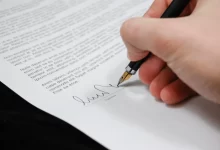
What are the Procedure to File a Patent Registration? Introduction to Patent…
-
In a New York City Machete Attack, a man was arrested and charged with attempted murder.

In a New York City Machete Attack, a man was arrested and…
-
Prosedur Pengajuan Pemberi Dana di Jembatan Emas 2023

Prosedur Pengajuan Pemberi Dana di Jembatan Emas 2023 1. Pilih dan Filter…
-
Tenth Circuit Rules on Colorado’s Kid Misuse Secrecy Regulation

Tenth Circuit Rules on Colorado’s Kid Misuse Secrecy Regulation Given the reasonings…
-
Judge Greenlights Claim Against Ontario for Nursing Home Passings During Pandemic

Judge Greenlights Claim Against Ontario for Nursing Home Passings During Pandemic An…
-
Regine Heber, a longtime New Brunswick broadcast journalist, has been arrested
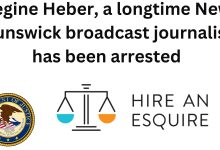
Regine Heber, a longtime New Brunswick broadcast journalist, has been arrested journalist…
-
Locate the Best Personal Injury Lawyer Near Me: A Guide 2024

Your Trusted Advocate: Locating A Personal Injury Lawyer Near Me Introduction When…
-
The best car insurance companies in America and Canada

The best car insurance companies in America and Canada There are dozens…
-
How Current Law offices Can Lessen Records Receivable 2022

How Current Law offices Can Lessen Records Receivable 2022 AR pile-ups can…
-
Stray pieces of Getting and Giving Attorney References
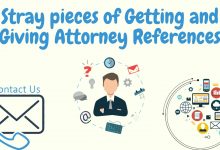
Stray pieces of Getting and Giving Attorney References The most important phase…
-
Expert Guidance: How A Pittsburgh Criminal Lawyer Can Help You 2024

Expert Guidance: How A Pittsburgh Criminal Lawyer Can Help You Introduction When…
-
After 40 years, Fauci is stepping down as NIAID director.

After 40 years, Fauci is stepping down as NIAID director. Although the…
-
Best Bike Insurance Agency 2022

Best Bike Insurance Agency 2022 At this point, there are overall 25…
-
Review Pinjaman Online Lahan Sikam

Review Pinjaman Online Lahan Sikam, Fintechnya Orang Daerah Dengan 2 Penawaran Produk…
-
Raúl Pardo Geijo, Best Criminal Legal advisor 2023

Raúl Pardo Geijo, Best Criminal Legal advisor 2023 El penalista murciano Ra?l…
-
Charlie Adelson’s lawyers need Magbanua’s assertions private until preliminary
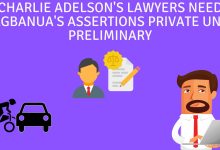
Charlie Adelson’s lawyers need Magbanua’s assertions private until preliminary Lawyers for denounced…
-
Daftar Pinjaman Online Berbahaya 2023

Daftar Pinjaman Online Berbahaya 2023 Pada dasarnya, jenis pinjaman online yang semacam…
-
What is engineering insurance in America ?

What is engineering insurance in America ? Construction and contract work is…
-
Attorney Rose Mock of Ohio Traffic Accident

Attorney Rose Mock of Ohio Traffic Accident Biography / About Rose Mock…
-
Best Online Mortgage Lenders of 2022

Best Online Mortgage Lenders of 2022 Shelter-in-place orders haven’t been enough to…
-
When our truck accident attorneys in Dallas and Fort Worth investigate a trucking accident

When our truck accident attorneys in Dallas and Fort Worth investigate a…
-
Preeminent Courts Segment 230 Case Could Upend the Internet: Google

Preeminent Courts Segment 230 Case Could Upend the Internet: Google A forthcoming…
-
House Oversight Dispatches Test Into Line Emergency Under Biden Organization
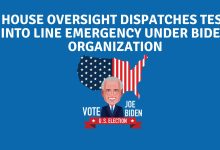
House Oversight Dispatches Test Into Line Emergency Under Biden Organization The conservative…
-
What is the best marine cargo insurance in America

What is the best marine cargo insurance in America Marine freight insurance…
-
Mesothelioma and Health care coverage Inclusion 2022

Mesothelioma and Health care coverage Inclusion 2022 To different degrees, clinical protection…
-
Life insurance in America, Britain and France

Life insurance in America, Britain and France If you start looking for…
-
Commercial Truck Accident Lawyers in Canada The Fastest Way to Contact

Commercial Truck Accident Lawyers in Canada The Fastest Way to Contact truck…
-
Five Qualities of Extraordinary Attorneys

Five Qualities of Extraordinary Attorneys What makes an extraordinary legal counselor? Is…
-
Insurance and types of insurance – traffic accidents – personal insurance

Insurance and types of insurance – traffic accidents – personal insurance The…
-
CA Accident Injury Attorneys – Helping Victims In California 2023

CA Accident Injury Attorneys – Helping Victims In California 2023 Bicycling is…
-
Doctor of Laws from Katherine Wolf Broadus School of Law

Doctor of Laws from Katherine Wolf Broadus School of Law Katherine Wolf…
-
Shearman and Authentic Lays Off 38 Lawyers, Staff in US (1)

Shearman and Authentic Lays Off 38 Lawyers, Staff in US (1) Shearman…
-
The best way to finance a 15-year mortgage in America

The best way to finance a 15-year mortgage in America Like many…
-
Reasons for obtaining health insurance in Canada

Reasons for obtaining health insurance in Canada For a few years before…
-
The FBI increases the reward for information about Capito to $500,000.

The FBI increases the reward for information about Capito to $500,000. On…
-
Does travel insurance cover an act of war in America

Does travel insurance cover an act of war in America Worldwide travel…
-
The quick and safe methodology – Bike Protection

The quick and safe methodology – Bike Protection In view of rising…
-
mesothelioma lawsuits 2023

mesothelioma lawsuits 2023 Search for Asbestos Mesothelioma Attorney On The Search Engine…
-
Understanding The Role Of julia rix attorney, At Law
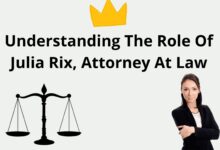
Understanding The Role Of julia rix attorney, At Law Introduction As the…
-
How Regulation Ruler Smoothes out Client Admission Structures

How Regulation Ruler Smoothes out Client Admission Structures Regulation Ruler’s legitimate CRM…
-
On January 6, the committee cancels the Trump subpoena
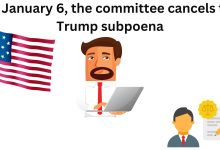
On January 6, the committee cancels the Trump subpoena The withdrawal of…
-
Attorneys for Hae Min Lee’s family ask Maryland court for redo

Attorneys for Hae Min Lee’s family ask Maryland court for redo On…
-
Daftar Pinjaman Online Khusus Petani 2022

Daftar Pinjaman Online Khusus Petani 2022 1. TaniFund Daftar pinjaman online khusus…
-
Lawsuit for Mesothelioma Bringing an Asbestos Lawsuit

Lawsuit for Mesothelioma Bringing an Asbestos Lawsuit An asbestos exposure lawsuit may…
-
Produk Pinjaman Online Lahan Sikam FREE 2023

Produk Pinjaman Online Lahan Sikam FREE 2023 Dalam pendiriannya, sejak 17 Februari…
-
Lawyers Stephens and Stevens Observe First Commemoration

Lawyers Stephens and Stevens Observe First Commemoration January 2023 imprints the one-year…
-
The Role And Importance Of Accident Lawyers In Legal Cases
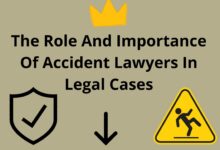
The Role And Importance Of Accident Lawyers In Legal Cases Introduction Accident…
-
Lawyer Intel is satisfied to report The 25 Striking Lawyers of Michigan for 2023

Lawyer Intel is satisfied to report The 25 Striking Lawyers of Michigan…
-
2023 accident attorney in louisville

2023 accident attorney in louisville If you have been involved in an…
-
Kevin McCarthy Chose as Speaker of the House for the 118th Congress

Kevin McCarthy Chose as Speaker of the House for the 118th Congress…
-
Dallas Truck Accident Lawyer 2022

Dallas Truck Accident Lawyer 2022 Big rig drivers are held to larger…
-
California Insurance Commissioner Orders Moratorium on Cancellations, Non-Renewals Following Wildfires

California Insurance Commissioner Orders Moratorium on Cancellations, Non-Renewals Following Wildfires California Insurance…
-
The most important insurances for engineers and the five different domains in America

The most important insurances for engineers and the five different domains in…
-
10 Tips to (Finally) Organize Your Law Office

10 Tips to (Finally) Organize Your Law Office What do I mean…
-
Judge ordered to punish Trumps and their lawyers by NY AG 2023

Judge ordered to punish Trumps and their lawyers by NY AG 2023…
-
Attorneys Johnston, Allison Hord, PA 2022

Attorneys Johnston, Allison Hord, PA 2022 Anybody encountering an individual physical issue…
-
Empowering Justice: A Deep Dive into Paladin Pro Bono’s Impact and Innovation

Paladin Pro Bono Review In today’s fast-paced and technologically-driven world, the necessity…